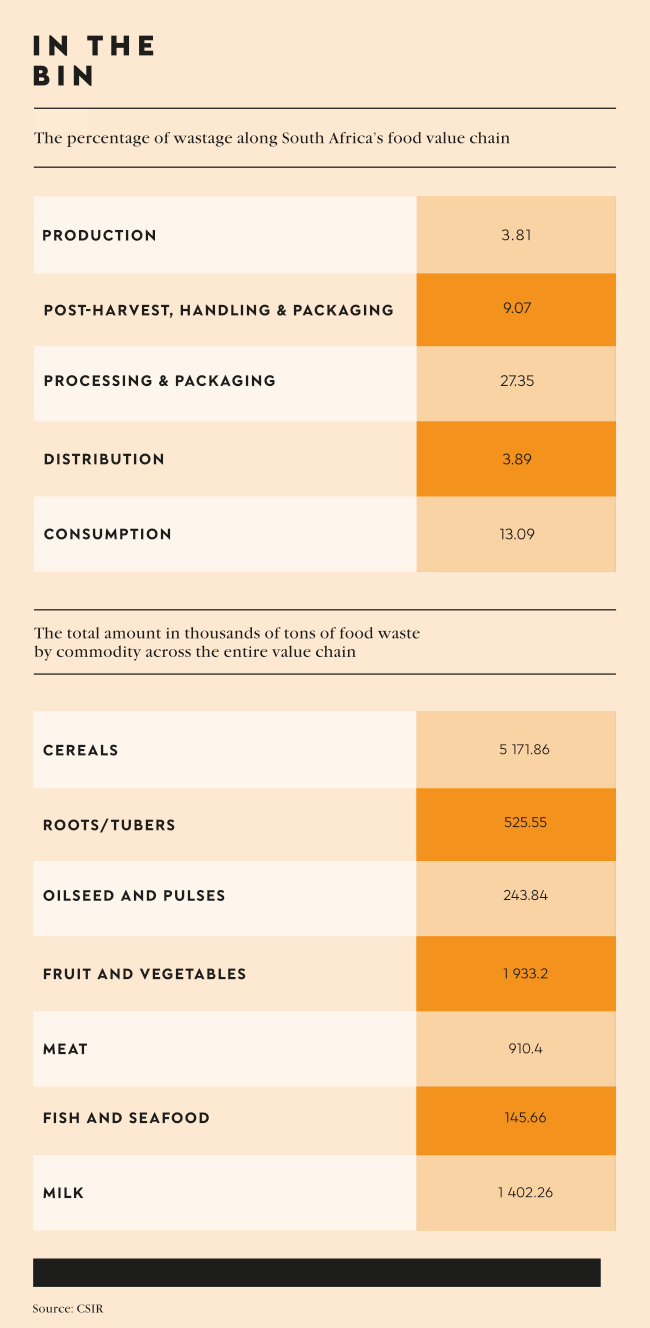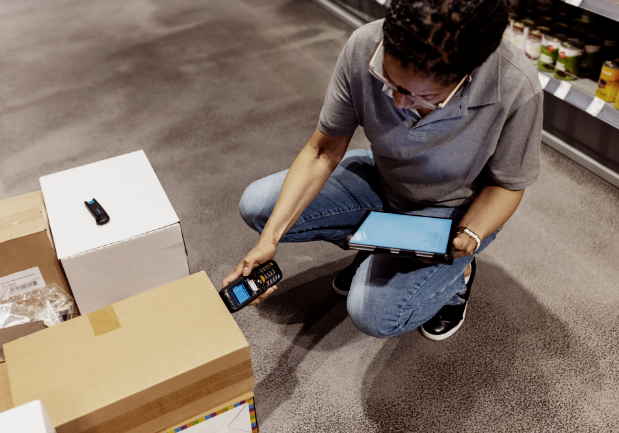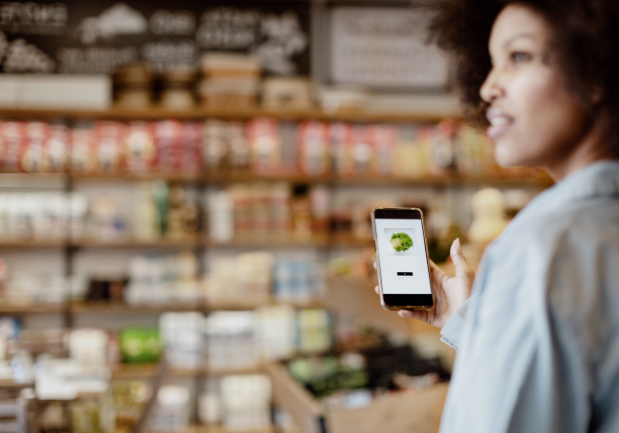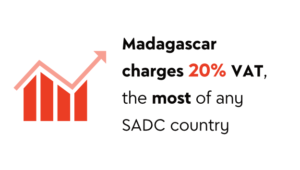Let’s get the bad news out of the way. The UN’s 2023 Global Report on Food Crises (GRFC) estimates that in 2022, 258 million people across 58 countries and territories – about 23% of study respondents – were acutely food-insecure and required urgent food assistance, a situation that has been described by UN secretary-general António Guterres as ‘unconscionable’.
It is the highest number in the seven-year history of the GRFC, growing 25% from 193 million people in 2021. More than 40% of those living in countries classified as suffering an acute food and livelihood crisis resided in just five countries, three of those in Africa – the DRC, Ethiopia and parts of Nigeria. The other two countries were Afghanistan and Yemen.
Against that stark background of global hunger, it is even more sobering to think that as much as one-third of food produced for human consumption is wasted globally – that’s 1.3 billion tons per year, worth an estimated US$1 trillion.
The UN Food and Agriculture Organisation breaks that down further. About 13% of food produced globally is lost between harvest and retail, while an estimated 17% of total global food production is wasted in households, the food service industry and retail.

In South Africa, the figures aren’t any better. A 2021 Council for Scientific and Industrial Research (CSIR) study estimated that 10.3 million tons of edible food intended for human consumption in South Africa was lost or wasted. While this is equivalent to 34% of local food production, the real losses rise to 45% when food imports are included. About half that food wastage occurs during processing and packaging, with the consumption stage accounting for 18%.
Suzan Oelofse, CSIR principal researcher, has called for robust action ‘across the food value chain, from farm to fork’, in order to achieve the target set out in the UN’s Sustainable Development Goal 12.3, which is to halve per capita food waste at the retail and consumer levels, and reduce food losses along production and supply chains by 2030.
On the positive side, the world is developing technology to improve efficiencies along the food value chain and combat food waste.
The Ellen MacArthur Foundation, which promotes the circular-economy principle globally, has identified AI as a technology suited to designing out avoidable food waste. To use a South African example, the Shoprite group has cut food waste by 11% in its deli department alone by using AI to optimise its ordering, replenishment and ranging processes and by using data analytics to identify food-waste hotspots.
‘Our biggest efforts go into preventing food waste and losses before they occur,’ says Sanjeev Raghubir, sustainability manager at Shoprite.
The supermarket chain also uses AI and machine learning to predict sales at certain stores. ‘For example, a store close to the finish line of an annual sporting event will automatically be replenished with additional convenience meals for that single day of the year,’ says Raghubir.
This means food products are made available when there is demand, leading to less food waste on the shelves, but the process is more involved than it first appears.

He uses the humble broccoli as a case in point. ‘It sounds simple, but deciding how many broccoli heads to buy on any given day can be very complicated. There are so many variables.’
The variables range from current stocks of broccoli heads and their shelf life; to predicted demand for the vegetable; shipment frequencies; shelf capacity; current and planned promotions; and labour availability. ‘It’s not just the number of variables,’ he adds. ‘They need to understand the interactions of all these factors to optimise the number of heads of broccoli they should order.’
By crunching the data from each step in the complex process simultaneously, the Afresh system is able to determine the right number for hundreds of fresh produce items. One US grocer using the system is reportedly saving US$1 million a year and has reduced ‘shrink’ – the costs associated with throwing out fresh fruit and vegetables.
Another company, TOMRA of Norway, uses sensor-based technology to detect and measure the state of fresh food to help redirect good-quality produce not considered suitable for direct sale to consumers for use in other food products. Its AI algorithms help detect, analyse and sort products based on potential use; for example, redirecting more mature fruit to make smoothies.
US-based start-up Winnow, whose AI-enabled food management is used in thousands of locations across the globe, is tackling food waste from a different angle – the hospitality industry, which is estimated to waste a sizeable portion of the food that is purchased. ‘What we usually see in the commercial kitchens that we work with is between 5% to 15% of the food annual spend actually goes to waste,’ Kamran Abdollahi, Winnow’s business development manager for the Middle East and Africa, told IOL.
The system comprises a camera, which captures an image of the food waste as it is disposed of in a rubbish bin placed on a digital scale, which measures the weight of the discarded food. The scale and camera are connected to each other and a tablet. The user then identifies the food item and selects a reason for the waste.

‘Throughout each day all that data gets uploaded into a cloud-based server where we do all the analysis and processing of the data from our site,’ says Abdollahi. ‘It works on machine learning and every Winnow Vision [camera] system also learns from all the systems that we have deployed globally.’
One of its success stories is Hilton Hotels, which reports it has saved the equivalent of 600 000 meals at its hotels in Turkey, Africa and the Middle East. Using the system, the group’s pilot Green Breakfast programme saw a 62% reduction in pre- and post-consumer food waste across breakfast operations in 13 UAE hotels over four months.
Then there’s AI-driven dynamic pricing, a technology highlighted by the Ellen MacArthur Foundation as showing promise in supporting a circular food economy.
‘Our model gauges the risk of a certain item expiring on the shelf rather than being sold, and makes the decision as to whether a markdown is required or not,’ according to David Kat, senior VP of business development at Israeli tech firm Wasteless, whose system is used by grocery retailers in Europe and the UK. ‘The data we help generate can also help retailers better understand how to manage stock replenishment and avoid over-ordering. So we’re actually turning the current food waste problem into an opportunity,’ he told the BBC recently.
While reducing prices on close-to-sell-by-date food items is nothing new, AI-enabled dynamic pricing takes into account today’s complexities of category management and can deliver more accurate data at a more granular level.

A German report from advisory firm EY outlines some of those complexities. ‘A to-go [iced] coffee from the refrigerated section is definitely a good sell to customers on the way home, as is a large pack of grilled meat on a Friday evening if the weather is good. However, if there is an acute thunderstorm forecast, the reduced grilled meat will probably remain lying around, run out of the best-before date and be disposed of.
‘These are just two examples of a multitude of complicated interactions between shelf life, product properties, external influences and sales,’ it states. ‘Other factors include store location, holidays, seasons and so on.’ The same report suggests dynamic pricing could be worth an additional 10% to a retailer’s fresh food revenues, allowing it to sell items that would otherwise have been binned. A win for the retailer and a win, however small, for global food security.
On releasing the GRFC report last year, the UN’s Guterres said the food crisis demanded ‘fundamental, systemic change. This report makes clear that progress is possible. We have the data and know-how to build a more resilient, inclusive, sustainable world where hunger has no home – including through stronger food systems, and massive investments in food security and improved nutrition for all people, no matter where they live’.
It’s clear that any investment in AI-enabled tech will deliver substantial dividends – in profit and, quite possibly, human lives.
















